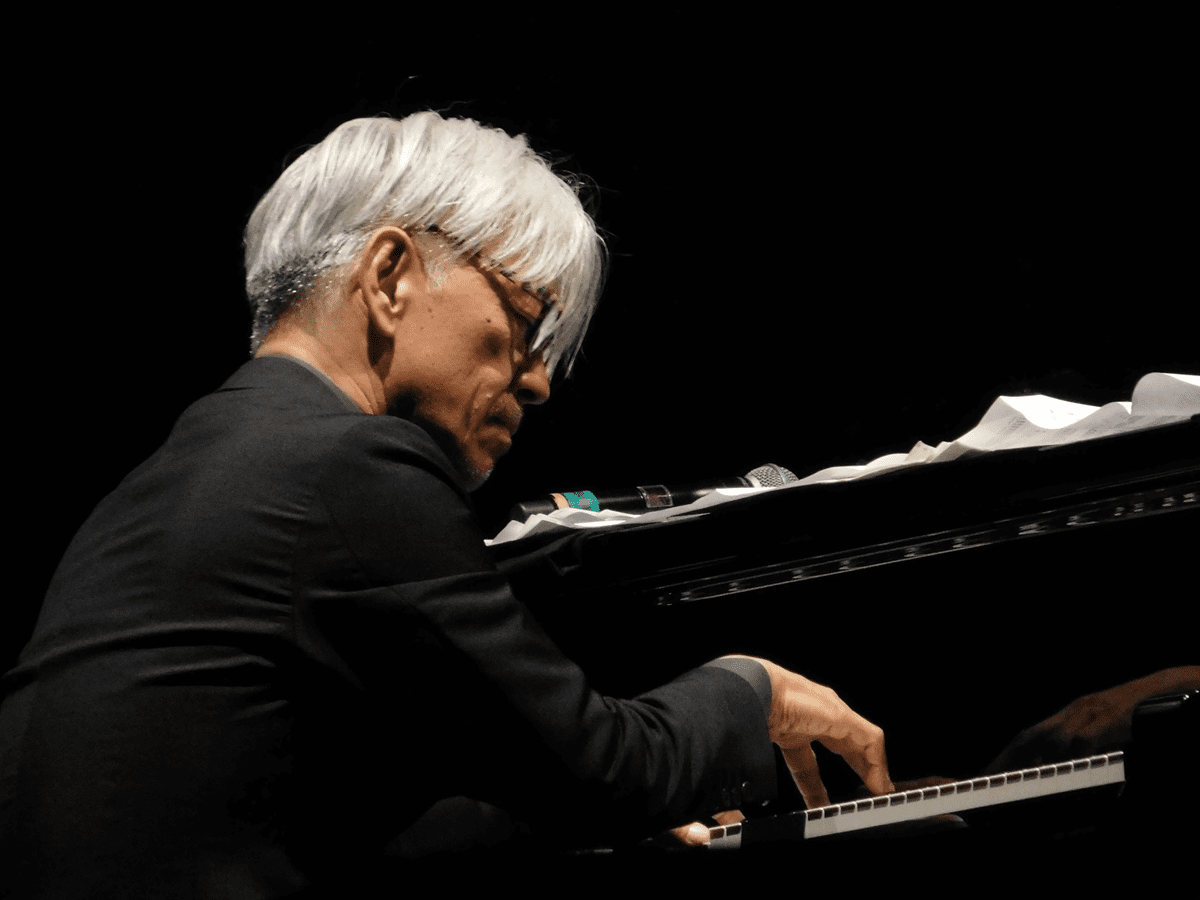Introduction
I was deeply saddened by the passing of Ryuichi Sakamoto, a true musical icon and visionary, on March 28, 2023, at the age of 71.
As a composer, pianist, and electronic music pioneer, Sakamoto has left an indelible impact on countless fans and musicians around the world, including me.
Throughout his illustrious career, he has deftly combined cultural influences and cutting-edge technologies to create a rich, diverse soundscape.
In this article, I delve into Sakamoto's top 11 songs, his lasting impact on the music industry, and his continued influence on contemporary artists.
Early Career and Collaborations
Formation of Yellow Magic Orchestra (YMO)
In 1978, Ryuichi Sakamoto co-founded the influential electronic music band Yellow Magic Orchestra (YMO) alongside Haruomi Hosono and Yukihiro Takahashi. Pioneering the use of synthesizers, drum machines, and samplers, YMO played a critical role in shaping electronic music's landscape for generations to come.
Influence of YMO on Electronic Music
Yellow Magic Orchestra's innovative approach to electronic music paved the way for genres like synth-pop, techno, and house music. Their groundbreaking album, "Solid State Survivor," released in 1979, featured iconic tracks like "Rydeen" and "Technopolis," which garnered international attention and acclaim.
Key Collaborations with David Sylvian
Throughout his career, Ryuichi Sakamoto has worked closely with English singer-songwriter David Sylvian. Their collaborations, including "Bamboo Houses" and "Forbidden Colours," have showcased Sakamoto's ability to seamlessly blend genres and cultures, resulting in a unique and memorable sound.
My Top 11 Songs by Ryuichi Sakamoto
"Merry Christmas Mr. Lawrence"
A powerful and evocative piece, "Merry Christmas Mr. Lawrence" served as the main theme for the 1983 film of the same name, in which Sakamoto also starred as an actor. This haunting composition, featuring Sakamoto's iconic piano work, has since become a hallmark of modern film scoring.
"Forbidden Colours"
Teaming up once more with David Sylvian, "Forbidden Colours" is a poignant ballad from the "Merry Christmas Mr. Lawrence" soundtrack. The song's ethereal quality and captivating melody have made it a timeless classic in both Sakamoto's and Sylvian's discographies.
"Thousand Knives"
"Thousand Knives" is a standout track from Sakamoto's debut solo album, released in 1978. Showcasing his innovative approach to electronic music, this track incorporated cutting-edge synthesizers and a diverse range of influences, cementing Sakamoto's reputation as a trailblazer in the industry.
"Energy Flow"
Drawing inspiration from the natural world, "Energy Flow" is a delicate piano piece from the 1999 album "BTTB." Its soothing melody and minimalistic approach resonated deeply with Japanese audiences, earning the distinction of being the first-ever instrumental track to top the Japanese charts.
"Solari"
"Solari," featured on Sakamoto's 2017 album "async," is a testament to his continued creativity and innovation. The track artfully combines synthesized and organic sounds, producing an otherworldly atmosphere that transports listeners to a realm of wonder.
"Riot in Lagos"
"Riot in Lagos," from the 1980 album "B-2 Unit," is a pioneering track in electronic music. Its groundbreaking use of synthesizers, drum machines, and samples heavily influenced future genres like electro, breakbeat, and techno, inspiring countless musicians worldwide.
"Neo Geo"
The title track of Sakamoto's 1987 album "Neo Geo" is a remarkable blend of Eastern and Western musical influences. Featuring collaborations with artists like Bill Laswell and Tony Williams, "Neo Geo" is a prime example of Sakamoto's ability to push boundaries, merging traditional Japanese elements with contemporary Western sounds.
"Bamboo Music"
Drawing upon environmental and cultural inspirations, "Bamboo Music" is an enchanting piece from the 1984 album "Illustrated Musical Encyclopedia." The fusion of electronic and traditional Japanese instruments creates a timeless, meditative atmosphere that showcases Sakamoto's versatility as a composer.
"Kizuna World"
A tribute to unity and connection, "Kizuna World" is a powerful track that emphasizes the importance of global harmony. This uplifting composition from Sakamoto's 2009 album "Out of Noise" is a perfect example of his skill in crafting emotionally resonant and thought-provoking music.
"Aqua"
Featured on the 1999 album "BTTB," "Aqua" is a serene and minimalist piece that highlights the beauty of simplicity. This piano composition showcases Sakamoto's ability to captivate listeners with the elegance of his melodies and the evocative nature of his music.
"The Revenant Main Theme"
This theme takes my breath away every time I hear it. It's an evocative and haunting piece that perfectly captures the essence of the 2015 film directed by Alejandro González Iñárritu. The theme combines melancholic strings and atmospheric synths, creating a sense of tension and emotional depth that mirrors the protagonist's harrowing journey through a brutal and unforgiving landscape. Sakamoto's masterful blend of cinematic and experimental elements in this composition not only enhances the storytelling but also leaves a lasting impression on the listener, further solidifying his reputation as one of the most innovative and influential composers of our time.
The Composer and the Activist
Ryuichi Sakamoto's Work on Environmental Issues
As an environmental activist, Ryuichi Sakamoto has used his platform and music to raise awareness about pressing ecological concerns. His album "Out of Noise" specifically addresses themes of nature, climate change, and the delicate balance between humans and the environment.
Sakamoto's Role as a Spokesperson for Peace
Sakamoto has also been a prominent advocate for peace, speaking out against war and nuclear power. His commitment to social and environmental causes has further solidified his legacy as an influential artist who uses music as a powerful tool for change.
Sakamoto's Legacy and Impact on Modern Music
Inspiring Contemporary Artists
Ryuichi Sakamoto's groundbreaking work has inspired a myriad of contemporary artists, from electronic music producers to experimental composers. His distinctive style, blending traditional and modern elements, continues to shape the evolution of music across various genres.
Bridging Cultures Through Music
Sakamoto's ability to seamlessly integrate Eastern and Western influences in his compositions has fostered greater cultural understanding and appreciation. His music serves as a bridge between diverse traditions, fostering a spirit of unity and collaboration in the global music community.
Frequently Asked Questions
What genre does Ryuichi Sakamoto's music belong to? Ryuichi Sakamoto's music transcends genres, combining elements of electronic, experimental, classical, and world music to create a distinctive and innovative sound.
How did Sakamoto start his music career? Sakamoto started his music career as a member of Yellow Magic Orchestra (YMO) in 1978, co-founding the group alongside Haruomi Hosono and Yukihiro Takahashi.
What awards has Ryuichi Sakamoto received for his music? Sakamoto has received numerous awards throughout his career, including an Academy Award, a Grammy Award, and a Golden Globe for his work on the "The Last Emperor" soundtrack.
How has Sakamoto's music evolved over the years? Sakamoto's music has evolved through experimentation with different genres, technologies, and cultural influences, resulting in a diverse and ever-changing body of work.
Are there any recommended albums for new listeners? New listeners may enjoy albums such as "async," "BTTB," "Illustrated Musical Encyclopedia," or "Out of Noise" to explore Sakamoto's unique sound and musical range.
Conclusion
Ryuichi Sakamoto's innovative and boundary-pushing music continues to inspire listeners and artists alike. As a composer, activist, and cultural icon, his lasting impact on the music industry is undeniable. From his groundbreaking work with Yellow Magic Orchestra to his captivating solo compositions, Sakamoto's legacy stands as a testament to the power of creativity, collaboration, and cultural exchange. By exploring his top 11 songs and understanding his influence on contemporary music, we can appreciate the profound depth and diversity of his artistic contributions to the global music landscape.
RIP Ryuichi Sakamoto 💔


